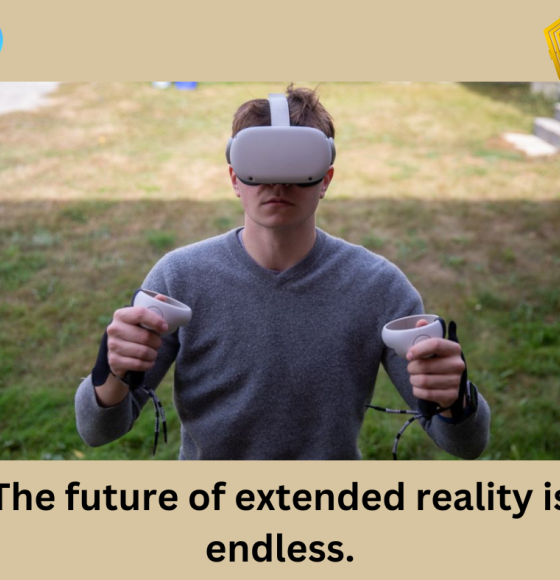In the years to come, extended reality (XR) has the potential to intersect with almost every industry.
Virtual reality (VR), a completely immersive, 360-degree digital world, augmented reality (AR), which enables you to interact with the actual world through digital overlays, and mixed reality (MR), a catch-all word for anything that combines the real and virtual worlds in some way, are all included in the XR category.
XR is a perfect gaming technology since VR headsets, like those made by Meta and Sony, offer a truly immersive and highly engaging experience.
While we typically associate gaming with entertainment-focused video games, the EQUIS lab is creating exergames—digital games that encourage physical activity—as well as educational games that employ augmented reality to bring lessons to life.
“Every new technology needs a driving force to propel it and create initial enthusiasm, ensuring that consumers are buying and developers are creating. According to professor of computer science and director of the EQUIS lab Nicholas Graham, games are what are currently driving mixed reality.
More widespread uses are beginning to emerge as a result of this growth.
With virtual reality, Graham said, “we now have the opportunity to hold remote meetings where everyone is brought into a shared [virtual] space and you see them, you can use your arms to gesture and point at things, and you can have shared artifacts you’re working on.” “You can feel other people around you,” the speaker said.
When it comes to the arts, VR enables virtual tours of well-known museums while AR develops interactive exhibitions. As opportunities for live translation arise, XR also enhances accessibility and connects individuals on a global scale.
According to Hugh Tuckwell, CompSci ’26, the founder and co-chair of Queen’s Extended Reality Club (QXR), “XR is a replacement for almost anything you could do with [current] technology,” in an interview with The Journal.
XR headsets are growing in popularity, but the cost-comfort ratio is a challenge for headset producers.
Many businesses are striving to make XR more compact because the way it currently operates is by essentially strapping a brick to your face, according to Tuckwell.
According to Tuckwell, VR headsets have extremely pixel-dense high-resolution displays in addition to internal and external cameras, lenses, speakers, and other components. The headsets are expensive to produce because of their sophisticated composition, which also makes it very challenging to compress into something that resembles a pair of spectacles.
Other industries, such as medical simulation training, are deeply investigating potential XR applications as the technology advances.
In actual clinical settings, students can practice and learn without endangering patients.
The Clinical Simulation Centre (CSC) at Queen’s University is looking into how AR can enhance the training that students receive in medical simulation.
According to Dr. Daniel Howes, medical director of the CSC, “we can teach some very fundamental skills in our current simulators, but they just aren’t realistic enough to develop true expertise and the high-level cognitive skills someone needs to work in a complex clinical environment.”
According to Howes, AR offers the chance to close the realism gap between the simulated scene and its real-world equivalent.
The resources of the CSC are not just available to medical students. Students from all departments of the faculty, including those studying nursing, respiratory therapy, and physiotherapy, are welcome in the simulation labs.
They practice working together since, in the end, we must cooperate. Everyone studying everything independently before coming together and attempting to operate as a team does not make sense. This is an excellent approach to get everyone together and do inter-professional training, according to Howes.
Howes is happy to see AR improvements lower the cost of clinical simulation technology given the high cost of clinical simulation technology—current mannequin simulators cost over $100,000.
Even while XR has a lot of useful uses and intriguing possibilities, not everyone is in favor of it. According to Tuckwell, some people believe that virtual reality (VR) immersive worlds like the Metaverse cause people to miss out on the actual world.
“I believe that, at this point, technology’s meddling in social interactions is just sort of a natural extension of communication technology. There might be a way around it, but I’m not sure,” Tuckwell added.

















